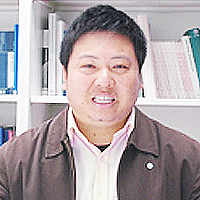Publish with Us
Mathematics & Physics Group
International Journal of Physics Research and Applications- ISSN:2766-2748 IJPRA
Chemistry Group
Biology Group
Annals of Proteomics and Bioinformatics- ISSN:2640-2831 APB
Archives of Biotechnology and Biomedicine- ISSN:2639-6777 ABB
Insights in Biology and Medicine- ISSN:2639-6769 IBM
Journal of Forensic Science and Research- ISSN:2575-0186 JFSR
Journal of Plant Science and Phytopathology- ISSN:2575-0135 JPSP
Pharma Group
Engineering Group
Clinical Group
Medical Group
pachydermoperiostosis syndrome
The Role of Genetic Mutations in the HPGD & SLCO2A1 Genes in Pachydermoperiostosis Syndrome
- Shahin Asadi*, Arezo Zare and Sima Koohestani
Published on: 1st May, 2025
Search by University/Institution
Enter your University/Institution to find colleagues at HSPI.
Ensuring author's satisfaction with
- Friendly and hassle-free publication process
- Less production time of articles
- Constructive peer-review
- Enhancing journal reputation
- Regular feedback system
- Quick response to authors' queries
Most Viewed Keywords
- Eryngium pristis, Apiaceae, anti bacterial activity, bacterial resistance, Staphy lococcus aureus, Methicillin-resistant Staphy lococcus aureus
- Stepwise regression model
- Chronic kidney disease
- Induction
- Gut-Brain Axis, Gut Microbiome, Enteric Nervous System, Gut Hormones, Neurological Disorder
- Lipopolysaccharide
- Subacute infectious endocarditis
- Pseudofungus
- CKD
- Sports medicine
- Inter-observer variability
- Genistin
- Corbevax
- Ecological region
- Nanofluids
- Allergic Broncho Pulmonary Aspergillosis (ABPA)
- Organic waste
- Arabian
- 94mTc
- Stroke
Search Articles by Country
Get all latest articles in all Heighten Science Publications Inc journals by country.
Testmonials
![]()
I wanna to thank clinical journal of nursing care and practice for its effort to review and publish my manuscript. This is reputable journal. Thank you!
Atsedemariam Andualem
![]()
The services of the journal were excellent. The most important thing for an author is the speed of the peer review which was really fast here. They returned in a few days and immediately replied all o...
Zehra Guchan TOPCU
![]()
I would like to thank JPRA for taking this decision. I understand the effort it represents for you. I'm truly happy to have the paper published in JPRA. And I'll certainly consider JPRA for my next pu...
Emmanuel BUSATO
![]()
My candid opinion is that the service you render is second to none. My favourite part is the prompt response to issue, really i value that.
Abiodun Akanbi Adeogun
![]()
I think that Heighpubs very good. You are very helpful. Thank you for everything.
Ana Ribeiro
![]()
"This is my first time publishing with the journal/publisher. I am impressed at the promptness of the publishing staff and the professionalism displayed. Thank you for encouraging young researchers li...
Adebukola Ajite
![]()
We appreciate the fact that you decided to give us full waiver for the applicable charges and approve the final version. You did an excellent job preparing the PDF version. Of course we will consider ...
Anna Dionysopoulou
![]()
Your journal has accomplished its intended mission of providing very effective and efficient goals in dealing with submissions, conducting the reviewing process and in publishing accepted manuscripts ...
John St. Cyr
![]()
In my opinion, you provide a very fast and practical service.
Ahmet Eroglu
![]()
I wanna to thank Clinical Journal of Nursing Care and Practice for its effort to review and publish my manuscript. This is reputable journal. Thank you!
Atsedemariam Andualem
HSPI: We're glad you're here. Please click "create a new Query" if you are a new visitor to our website and need further information from us.
If you are already a member of our network and need to keep track of any developments regarding a question you have already submitted, click "take me to my Query."




